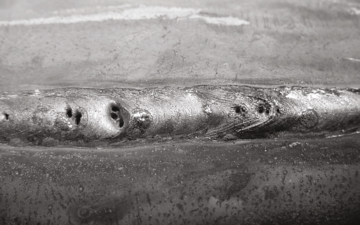Porosity in Welding: Identifying Common Issues and Implementing Ideal Practices for Avoidance
Porosity in welding is a pervasive concern that frequently goes unnoticed till it triggers substantial problems with the stability of welds. In this discussion, we will certainly explore the key variables contributing to porosity formation, examine its detrimental results on weld performance, and discuss the best methods that can be adopted to decrease porosity occurrence in welding procedures.
Typical Sources Of Porosity

One more constant culprit behind porosity is the presence of pollutants on the surface area of the base steel, such as oil, oil, or rust. When these contaminants are not effectively gotten rid of before welding, they can evaporate and end up being entraped in the weld, causing flaws. Additionally, utilizing unclean or wet filler materials can present impurities into the weld, contributing to porosity issues. To mitigate these typical reasons for porosity, extensive cleansing of base metals, correct protecting gas selection, and adherence to optimal welding specifications are important methods in achieving top notch, porosity-free welds.
Impact of Porosity on Weld High Quality

The existence of porosity in welding can substantially endanger the architectural honesty and mechanical residential or commercial properties of bonded joints. Porosity produces voids within the weld metal, deteriorating its total toughness and load-bearing ability.
Welds with high porosity degrees tend to exhibit lower effect toughness and lowered capacity to flaw plastically prior to fracturing. Porosity can hamper the weld's capability to properly transfer forces, leading to early weld failure and potential safety and security dangers in essential frameworks.
Best Practices for Porosity Avoidance
To enhance the structural honesty and top quality of bonded joints, what particular steps can be implemented to lessen the occurrence of porosity throughout the welding procedure? Porosity avoidance in welding is important to guarantee the integrity and stamina of the final weld. One reliable method appertains cleansing of the base steel, getting rid of any contaminants such as rust, oil, paint, or wetness that can lead to gas entrapment. Making sure that the welding devices is in excellent condition, with tidy consumables and proper gas flow rates, can likewise considerably minimize porosity. Additionally, maintaining a secure arc and controlling the welding specifications, such as voltage, current, and take a trip rate, aids develop a regular weld pool that decreases the threat of gas entrapment. Using the right welding strategy for the certain material being bonded, such as changing the welding angle and gun setting, can even more prevent porosity. Regular assessment of welds and instant removal of any type of issues identified during the welding procedure are necessary methods to stop porosity and generate top quality welds.
Relevance of Appropriate Welding Techniques
Carrying out appropriate welding techniques is paramount in making certain the architectural stability and high quality of bonded joints, constructing upon the structure of efficient porosity prevention actions. Extreme warm can lead to raised porosity due to try this out the entrapment of gases in the weld swimming pool. Furthermore, making Look At This use of the ideal welding specifications, such as voltage, existing, and travel speed, is essential for attaining audio welds with very little porosity.
In addition, the selection of welding process, whether it be MIG, TIG, or stick welding, need to straighten with the specific needs of the task to make sure ideal results. Correct cleansing and preparation of the base metal, along with selecting the best filler material, are also important components of proficient welding techniques. By sticking to these finest techniques, welders can decrease the threat of porosity development and create top quality, structurally sound welds.

Testing and Quality Assurance Steps
Quality control steps play a vital duty in confirming the honesty and integrity of bonded joints. Evaluating procedures are necessary to spot and protect against porosity in welding, making certain the stamina and sturdiness of the final item. Non-destructive screening techniques such as ultrasonic testing, radiographic screening, and visual Visit This Link examination are typically utilized to recognize possible problems like porosity. These methods enable the evaluation of weld quality without compromising the stability of the joint. What is Porosity.
Conducting pre-weld and post-weld examinations is also vital in keeping quality assurance criteria. Pre-weld assessments involve verifying the products, equipment settings, and cleanliness of the workspace to avoid contamination. Post-weld evaluations, on the other hand, assess the final weld for any type of defects, including porosity, and verify that it fulfills defined criteria. Executing a comprehensive quality control strategy that includes thorough testing treatments and assessments is paramount to reducing porosity problems and ensuring the general top quality of bonded joints.
Verdict
To conclude, porosity in welding can be a typical concern that affects the high quality of welds. By identifying the common sources of porosity and applying best methods for avoidance, such as proper welding methods and screening steps, welders can guarantee premium quality and trustworthy welds. It is vital to focus on prevention methods to decrease the event of porosity and maintain the honesty of welded frameworks.